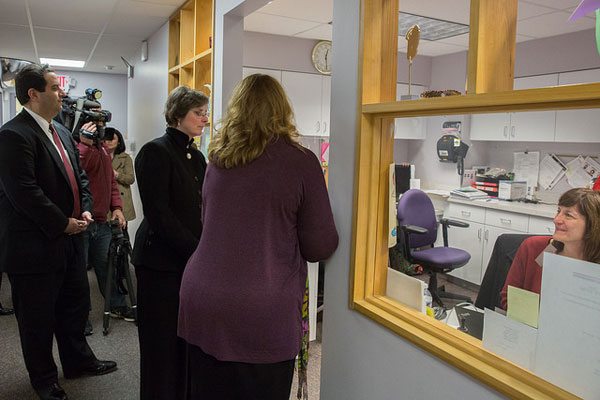
December 12, 2017; Georgia Straight
As the opioid crisis drags on, its costs have become well-documented facts: According to a White House Council of Economic Advisors (CEA) report released last month, the epidemic caused 33,000 deaths and cost $504 billion, or 2.8 percent of GDP, in 2015 alone. But under these stark and horrifying statistics is another cost, paid by the nonprofit employees who bear the burden of care for the epidemic’s victims.
The Canadian Central City Foundation released a report this month called
“On the Front Lines of the Opioid Epidemic,” which details the trauma and impact on community organizations that deal with opioid victims.
“One of my staff told me a while ago, they are scared of the phone ringing now because they have had too many people call them to say somebody has died,” Calum Scott of Family Services of Greater Vancouver told the Georgia Straight.
The report’s introduction reads, “Staff and volunteers at our community partners are the ones having to check constantly on clients to be sure someone is not overdosing, to revive clients who OD at their sites, to help clients grieving from the immense loss of life in the community—all while dealing with their own trauma, grief and stress.”
And as the Atlantic pointed out last year, many nonprofit salaries are not enough to cover things like therapy, even if overworked employees have the time for it. As Mark Hager and Elizabeth Searing pointed out for NPQ, one of the quickest ways to kill your nonprofit is to underinvest in infrastructure to support volunteers. The same goes for staff, especially when the nonprofit’s work is emotionally draining. Scott added,
We are experiencing more sick time from staff, more stress leaves, more staff who are not having fun at work. It’s a mix of what’s going on in the street and the stress and expectation. At some point, we are going to have to have some changes because we are not going to have anybody on the front line to do the work.
Sign up for our free newsletters
Subscribe to NPQ's newsletters to have our top stories delivered directly to your inbox.
By signing up, you agree to our privacy policy and terms of use, and to receive messages from NPQ and our partners.
And yet, the Central City report noted, of the $7 million (Canadian) that Vancouver Coastal Health is spending on the crisis this year, only $70,000 is available for projects that “help empower vulnerable communities to address social and/or environmental factors that increase their risk of overdose.” The City of Vancouver offered $600,000 to organizations “working through peers and community members to play a leadership role in combating the overdose.” The report did not note any money bookmarked for organizations to help staff deal with the exhaustion and trauma that comes from dealing with a life-and-death crisis every day.
NPQ has reported similar trends for US organizations combating the same crisis. Anna Berry noted the difficulty of establishing safe injection sites and supporting recovery centers and the lack of support that aid organizations receive, even in hard-hit states like New Hampshire and Massachusetts. Karen Kahn explained that a change in public policy around the prevention and treatment of opioid abuse is what’s really necessary, including a reexamination of prescription policy and the provision of social supports.
The Central City report found, “More than 71 percent of organizations say the opioid crisis is having a direct impact on their staff and their work with people in the inner city. Another 29 percent say the impact of the crisis has been indirect, but still highly significant.” Organizations report higher rates of turnover and burnout, which in turn impacts their bottom line, as well as organizational culture and morale. If ever there were an emotional argument for fully funding overhead costs, this would be it.
What can be done? To start with the most obvious, more funding to nonprofits would help to hire extra staff, pay for overtime hours and grief counseling, and better equip them to deal with a crisis to which every solution seems to come up heartbreakingly short. But other measures could also help, such as investing in the infrastructure around affected communities, to send the message that these communities matter and openly recognize that the illness felling people left and right is a symptom of societal neglect and not a predictable habit of people who are somehow less.
In October, President Trump presented a condensed example of why this crisis continues to rage, when he declared the opioid epidemic a public health emergency but designated no additional federal funds to help deal with it. The implicit message to nonprofits is, “We expect you to figure this out and solve it, now,” but solving a problem requires resources.
As the conversation about this frightening health crisis ebbs and wanes, the effect on front-line nonprofit staff is not to be overlooked. The true toll of the opioid crisis on communities may never be known, but this is certainly a significant part of it.—Erin Rubin











